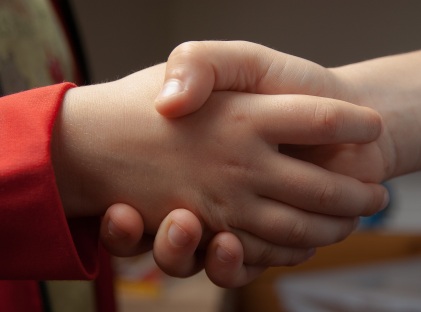
Throughout my years of participation in the early childhood education field as a teacher, director, and consultant, I have had the opportunity to observe a fair amount of approaches (whether conscious or not, I do not know) to parenting. I find it fascinating how every single family has their own unique dynamic and yet, we all adopt certain parenting tendencies and techniques that share particular similarities.
For the most part, from what I have experienced with parents and being a parent myself, we all want to love our children and do our best to provide them with a secure, nurturing environment in which to grow and flourish. And sometimes, through our desire to establish a harmonious and loving relationship between ourselves and our children, we neglect to recognize the importance of setting clear limits with our children.
I will give you an example that rings true to so many scenarios I have witnessed between a child and his or her parent:
Mom is picking up her son from his childcare environment. It is time to leave to go home. The boy, however, is reluctant to leave right away because he wants to keep playing with the toy trucks. Mom says “Okay, come on, it’s time to go home!” And the little boy laughs and runs away, unconsciously hoping to engage his mother in a cat-and-mouse style pursuit. Mom “gives in” and says “Okay, you can have 2 more minutes to play.” After 2 minutes has passed, Mom says again “Okay, it is time to go now. You had 2 more minutes to play, so now it’s time to go.” The whining commences and the little boy says “No! I want the trucks!” Mom approaches her little boy to encourage the process of leaving. Little boy runs away. Mom eventually catches her little boy, swoops him up happily and repeats “Okay, time to go home.” And little boy suddenly begins screaming, kicking, crying and yelling “I don’t want to go home! I want the trucks!”
So often in this type of scenario, what I have observed is that parents continue to engage in the “battle of wills” with their child. Parents are so intent upon solving a situation with their child in a peaceful way that respects the child’s independence, that sometimes, we (yes, I include myself here) neglect to draw a line with our children and let them know when enough is enough. I would like to let all parents and educators of young children know:
It is okay to tell a child (whether your own or one of your students) when enough is enough.
And it is okay to be firm and, sometimes, even stern with your children in order to set and communicate boundaries. It is okay and, in fact, it is essential to establish limits with young children to help them learn what is expected of them in their environments and relationships.
As adults, when we create and uphold certain guidelines with our children, we establish a sense of order and predictability for them. This does not mean that we have to become militant drill sergeants with our children and structure every moment of their lives around rules and regulations. What it means is that when children know what is expected of them and what to expect from their adult guides, they have a higher opportunity of letting go of power struggles and functioning more naturally in any given environment.

Establishing and upholding certain behavioral guidelines in your family or classroom is really an act of love. We are not just “laying down the law” with our children… we are also creating space to acknowledge and assess our own behaviors as adults and parents. None of us are ever perfect and it is important to remember this about our children as well as ourselves.
Set the guidelines. Model the desired behavior. Give yourself and your children permission to be human. Remember to be flexible like bamboo: Firm, bendable, but not easily breakable.
Don’t be afraid to intervene in a child’s behavior that displays signs of disruption, harm, or careless misdirection. We don’t have to scold the child or raise our voices. We simply need to stop the unproductive behavior, direct the child elsewhere, and work through whatever sort of reaction the child demonstrates in a humane, constructive manner.
As adults, we represent the blueprint for who our children will ultimately become. It is our responsibility to model, practice, and teach respect on all levels.





